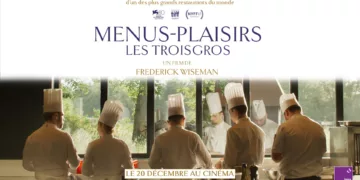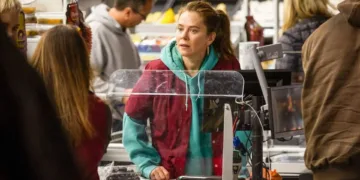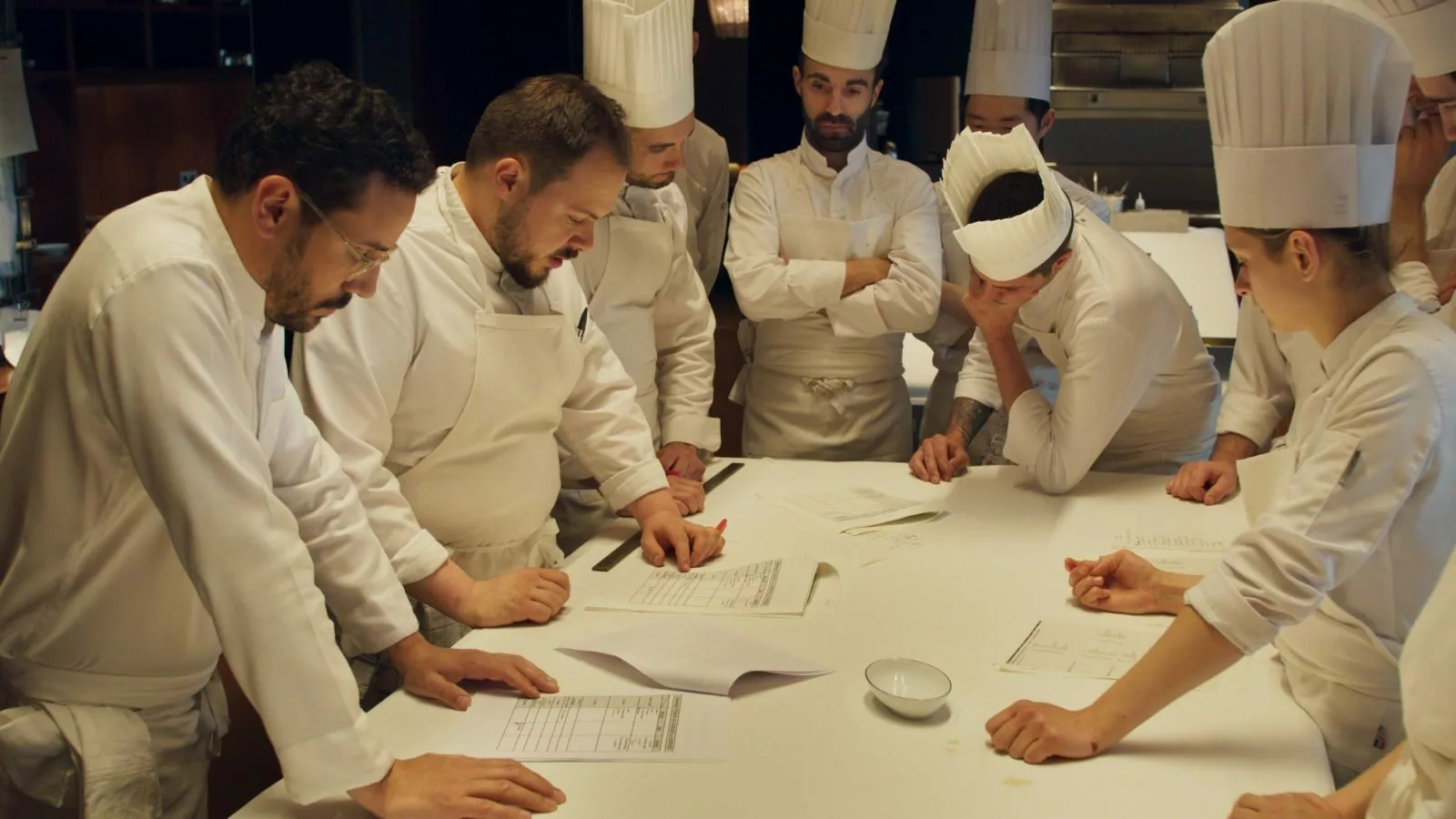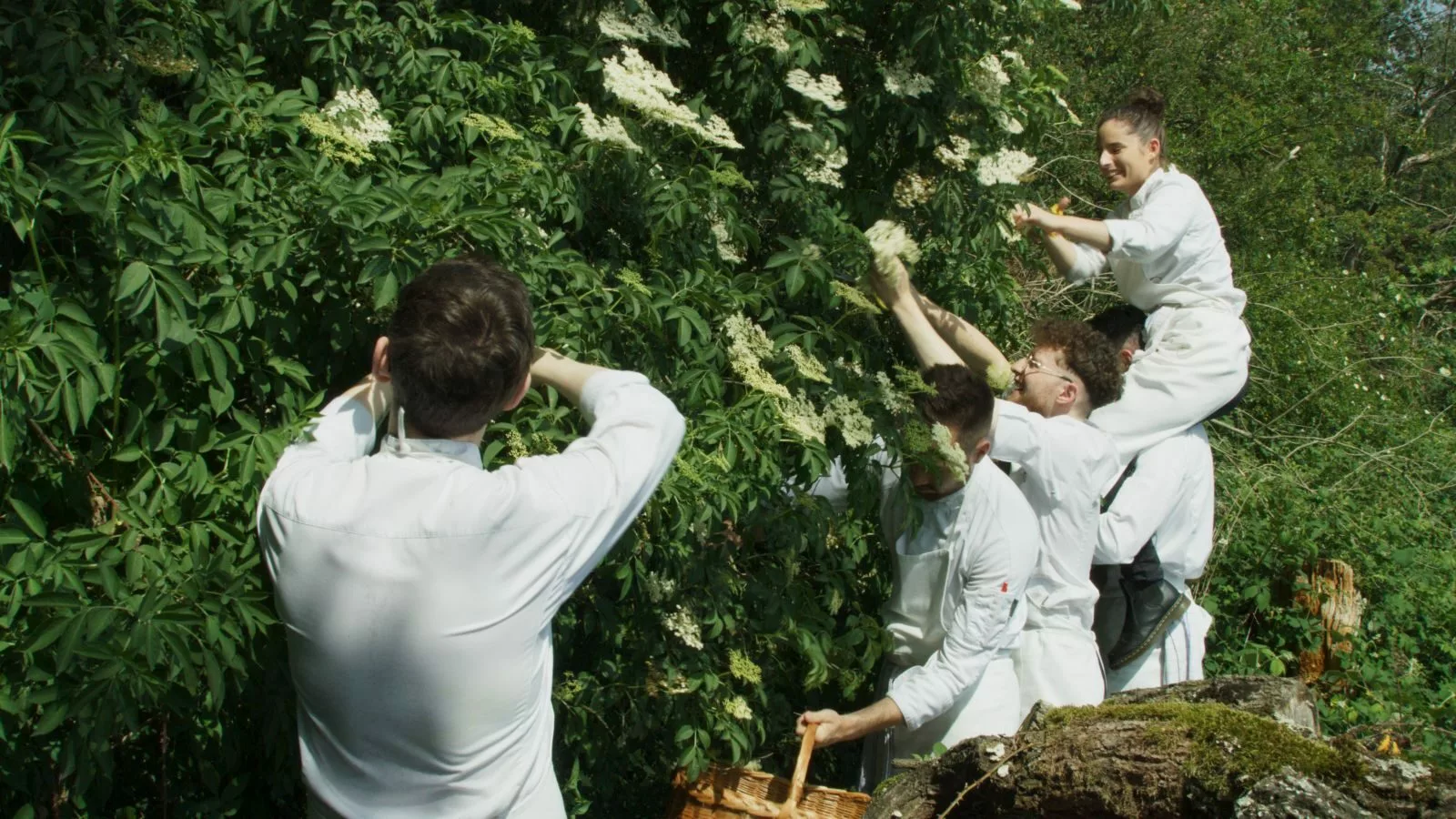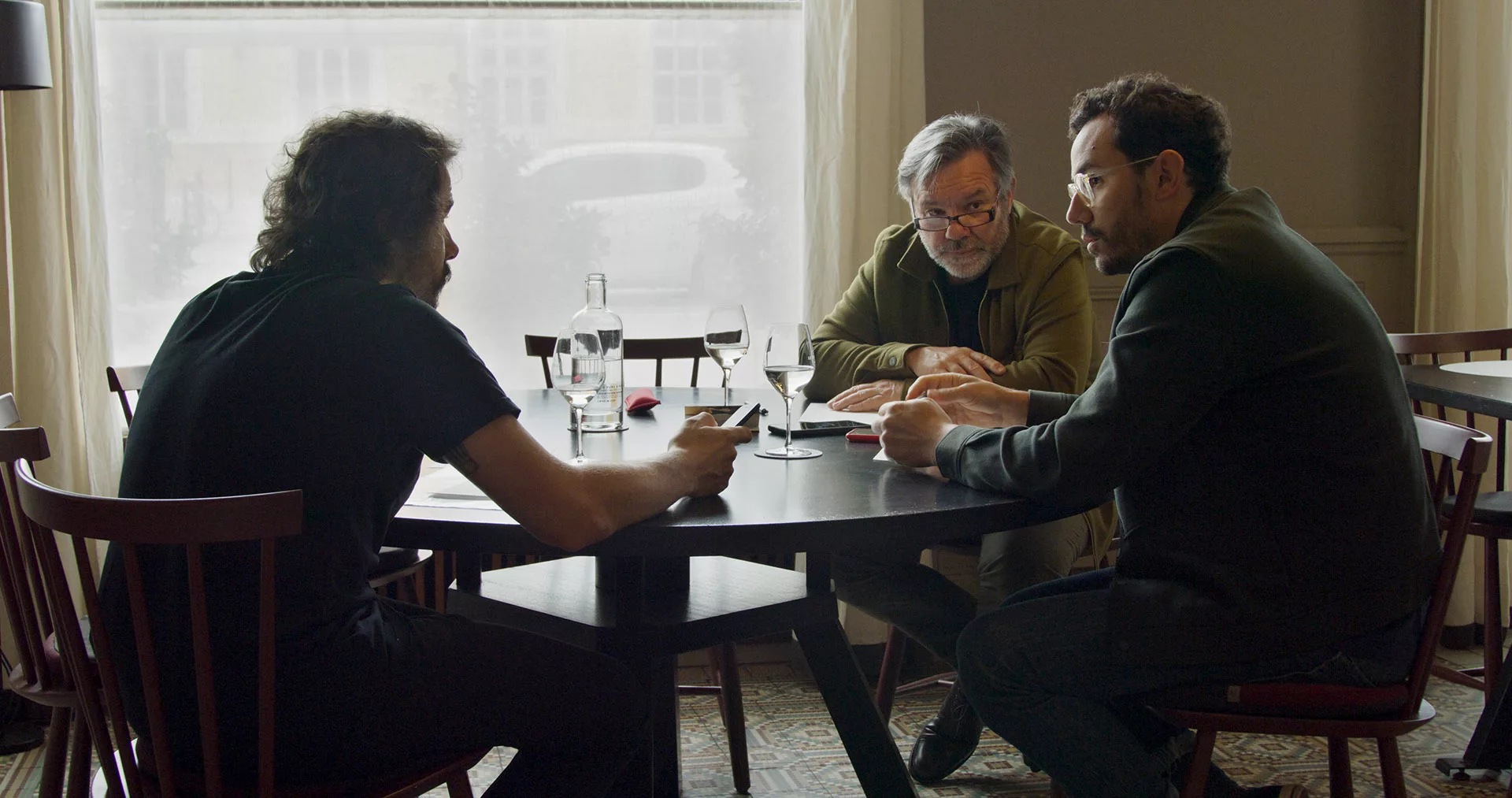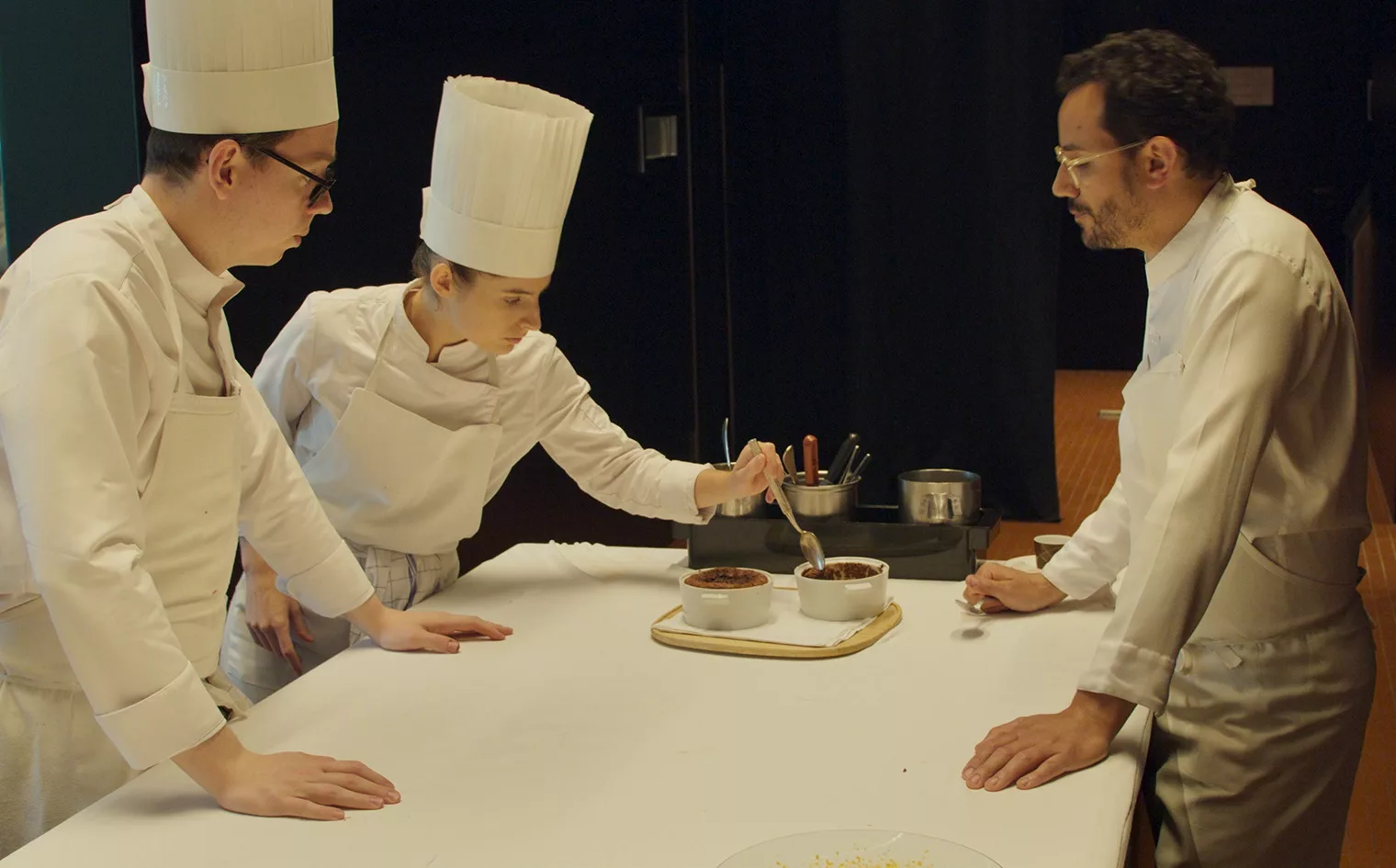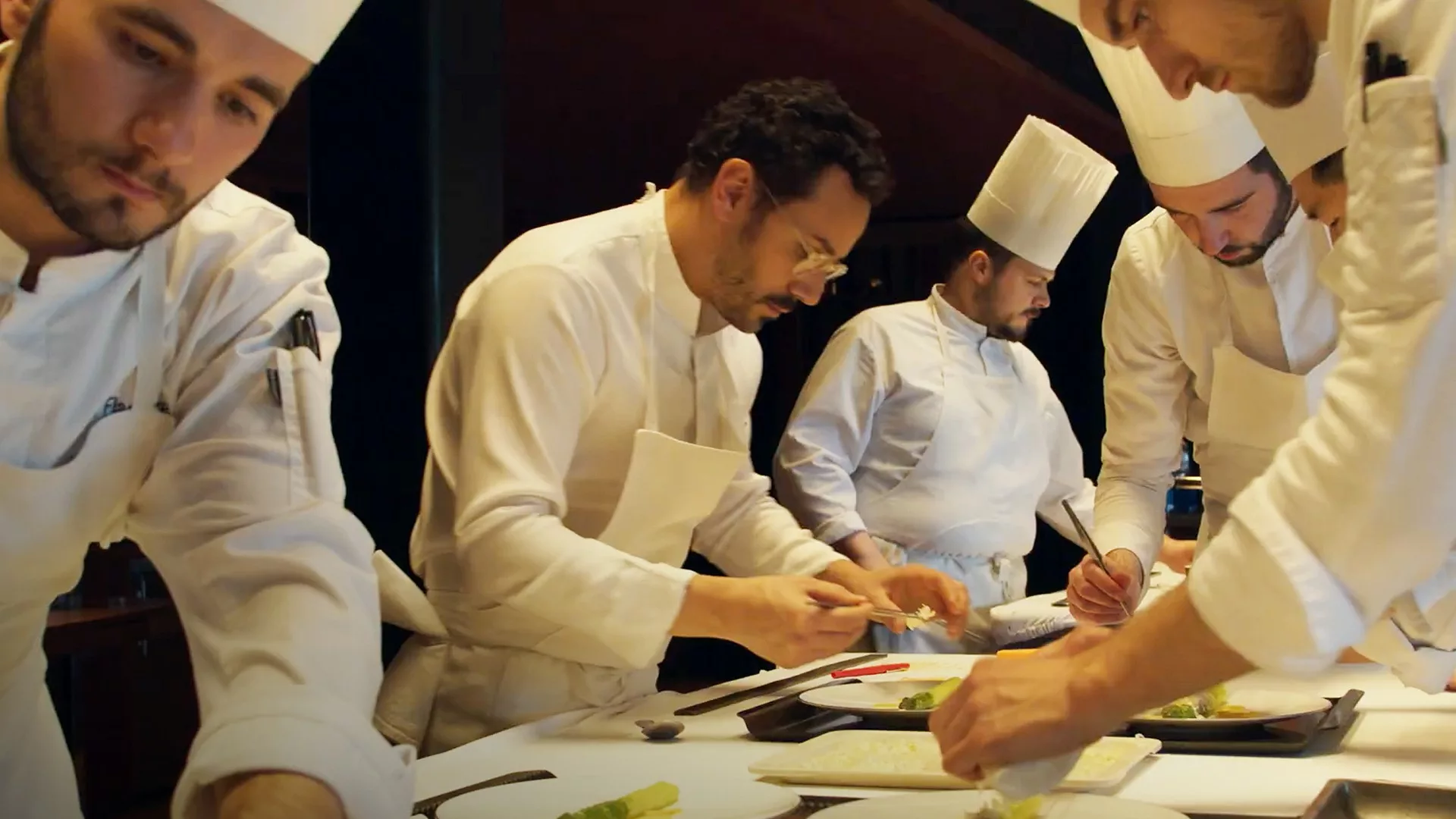Renowned American documentarian Frederick Wiseman has spent over 50 years granting viewers unique access into the oft-obscure machinations of societal institutions. With an observational style free of interviews and narration, Wiseman subsumes audiences into schools, hospitals, governmental bodies and artistic organizations to expose their frequently arcane inner workings. His painstakingly thorough approach yields films of epic length, seeking to fully convey the intricacies of immense systems most take for granted.
Wiseman’s latest sprawling opus, Menus-Plaisirs Les Troisgros, continues this tradition by examining the esteemed Troisgros culinary institution. Spanning four hours, the film casts its gaze upon the renowned French restaurant which has remained in the Troisgros family for three generations. Under the guidance of patriarch Michel Troisgros, the eatery has earned the coveted three-star Michelin rating cementing its status as one of France’s premier dining establishments. Wiseman’s characteristically patient camera offers a rare glimpse into the precise coordination required to operate a world-class kitchen.
Through extended takes devoid of rapid editing, Wiseman allows viewers to fully appreciate the efforts behind curating sublime gastronomic experiences. Fans of food-focused films will relish this painstaking look into the creative processes which elevate Troisgros into the culinary stratosphere. Those familiar with Wiseman’s work will recognize his studious cinematic language which transforms nuanced workflows into mesmerizing viewing.
A Countryside Bastion of Culinary Excellence
Situated amidst the rolling hills and verdant pastures of rural central France, La Maison Troisgros stands as the crown jewel of the Troisgros gastronomic empire. Its bucolic surroundings evoke a peaceful agrarian ideal seemingly worlds away from bustling urban dining hubs. Yet the legendary eatery remains fiercely dedicated to innovation and excellence in crafting exquisite fare. This dedication has spawned a storied legacy stretching back three generations.
At the helm sits Michel Troisgros, the latest patriarch overseeing the family tradition of culinary mastery. As grandson of founder Jean-Baptiste Troisgros, Michel perpetuates lofty standards which date back to 1930. Under his assured guidance along with sons César and Léo, La Maison Troisgros retains its coveted three Michelin star status — cementing its reputation as one of France’s premier dining establishments. Michel lends his lifetime of expertise by consulting closely with head chef César on reinventing beloved regional dishes for contemporary palates. Their lively yet genial debates over ingredient selections and preparation techniques underscore a joint pursuit of perfection.
Meanwhile younger son Léo applies lessons gleaned from his father and brother, implementing them at La Colline du Colombier, the family’s more relaxed bistro. Its splendid hilltop perch provides diners yet another lens into the Troisgros commitment toward warm hospitality and excellence. Even Michel’s daughter Marion contributes by spearheading accommodations at the equally lauded adjoining Troisgros hotel.
Together all four family members form key pillars upholding the Troisgros legacy as a bastion of countryside gastronomy blending tradition with innovation across decades. Those lucky enough to pass through its pastoral doors receive not merely exquisite sustenance but a lasting encounter with history in the making.
A Cinematic Journey into the Heart of a Prison: Join us in exploring Leonardo Di Costanzo’s latest masterpiece. Read our comprehensive review of “The Inner Cage”, a film that offers a unique perspective on life behind bars, highlighting the shared humanity between captors and captives.
Orchestrating Culinary Artistry
While intrigue and conflict tend to dominate fictionalized portrayals of upscale restaurant kitchens, Wiseman discovers an oasis of refined focus within the confines of Troisgros. Devoid of the dramatic temperaments occupying spaces like The Bear’s chaotic cooker, Troisgros’ kitchen dazzles with graceful composure. Teams of chefs exhibit almost trance-like concentration while whisking sauces or deboning fish with nimble precision. An air of hushed intensity prevails, the silence magnifying meticulous attention granted each ingredient and task.
Seamless choreography accommodates multiple chefs simultaneously preparing dishes spanning seafood, meat and luxurious desserts. Wiseman’s roving lens captures the hypnotic rhythm as scraps and tools fly at brisk tempos yet narrowly avoiding collision. Despite the relentless activity, rarely does a voice raise above a concentrated murmur. Troisgros’ spacious kitchen sprawls openly, designed by Michel to enable effortless communication through subtle glances. Patients and ingredients shuttle between stations with seemingly telepathic awareness of timing and placement at each phase.
Wiseman also grants glimpses of dazzling creativity behind Troisgros’ gastronomic mastery. During recipe development, spirited discussion flows as Michel, César and Léo analyze taste profiles, textures and presentation. Debating merits of tweaks ranging from shavings of almond to elderberry reductions, their discerning palates probe endless refinements striving for the sublime. Each dish presents its own unique puzzle of synergizing appearance, texture and aroma into a singular sensorial experience. The chefs tackle this complexity with scholarly rigor and imagination, lending touches approaching artistry.
This artistic essence emerges fully within stunning final presentations. Fish and meat resembling meticulous sculptures, crackers mimicking autumn leaves, dainty chocolate orbs — such dazzling culinary illusions showcase decades of accumulated talent. Yet technical mastery alone cannot replicated Troisgros allure. Their dishes brim with history, identity and terroir binding the surrounding land and community.
It infuses local Ham slices, hand-selected Saint-Nectaire and cottage cheeses to regional Loire Valley wines. Each component harmonizes into a timeless expression of place and culture. Through this lens, Wiseman reveals the Troisgros kitchen not merely as a workspace manufacturing meals but a living conduit of generations-old traditions and relationships flowing between cuisine and countryside.
Discover the Dark Humor of Obituary: “Intrigued by the blend of black comedy and crime thriller? Dive into our detailed review of Obituary Season 1 and explore the unique humor that lies in the shadow of death.”
An Ode to Process and Collaboration
True to his career-spanning fascination with intricate systems, Wiseman lavishes attention upon the myriad processes enabling Troisgros to consistently achieve excellence. He trails staff on enlightening sorties to vital suppliers like the farmer carefully nurturing ideal soils to yield perfect vegetables. Wiseman also demonstrates cheese production, from herd to aging cellar, to highlight interchange between seasonality, agriculture and desired flavors.
Beyond isolated supply chains, however, Wiseman is more profoundly captivated by the creative dialogue stewarded by the Troisgros family itself. Though recipes may originate from Michel or his sons’ individual inspiration, they only fully actualize through collective refinement. In lengthy scenes that border on real-time, Wiseman allows viewers to wholly absorb exhilarating conversations around crafting iconic dishes. We witness César and Michel painstakingly debating whether to incorporate soy sauce, almond shavings or elderberry reductions into one recipe. Or César and Léo casually discussing whether blackcurrants could bolster a new meat course.
Through such vignettes, Menus-Plaisirs underscores creation itself as an iterative process requiring constructive criticism between collaborators. Individual genius alone cannot achieve Troisgros’ pinnacle — the spark for each dish necessitates refinement across multiple insightful palates. This not only applies to family members bouncing ideas to hone their philosophy. Diners also participate by sharing how certain ingredient combinations evoke memories or new revelations about flavor. For the Troisgros, innovating cuisine demands continually seeking outside perspectives from purveyors, staff and patrons alike to push boundaries.
By investing prolonged attention upon Troisgros’ episodic exchanges, Wiseman transports viewers directly into the thrill of eureka moments where new dishes take form. We are not merely passive spectators, but privy to the synergy when individual creativity collides through lively debate. Much like a painting takes shape upon canvas through ongoing dialogue between artist and medium, Troisgros’ signature works materialize as the family chases ephemeral moments of gustatory epiphany together.
Join Julia Child’s Culinary Adventures in Season 2: Discover the trials and triumphs of America’s beloved chef in the latest season. Explore our comprehensive Julia Season 2 review for an entertaining and insightful journey.
Concealing Subjectivity Through Objectivity
Amidst today’s editorialized documentary landscape, Wiseman distinguishes himself through steadfast commitment to pure observation without overt judgement. Wiseman structures scenes to explore moral ambiguities, urging audiences toward more nuanced perspectives on complex social issues. Menus-Plaisirs continues this tradition — while avoiding explicit thesis statements, when viewed critically, conceptual threads nonetheless emerge.
For instance, lengthy running times devoted to patrons enjoying extensive degustation menus could critique extravagance in rarefied dining. Shots following farmers scrutinizing soil nutrition may obliquely highlight class divides surrounding food accessibility. Explicit commentary remains absent, however lingering on specific imagery invites reflection upon what commentary Wiseman may intend beyond face value. Does focusing on select scenes similarly critique plutocratic excess found in projects like showpiece series The Menu?
Or perhaps such inclusions argue fine dining’s deeper necessity. Luxury sustains vital economic arteries flowing through vulnerable small producers to celebrated chefs. By investing profoundly in supreme ingredients, Michelin-starred restaurants also enable upholding dying generational wisdom that industrially-produced food continues eroding today. Under this interpretive lens, Troisgros epitomizes enlightened preservation of artisanal crafts interwoven with community livelihoods. Regardless of which speculative reading viewers derive, Wiseman’s pure documentation provides fodder for pluralistic hot takes.
Ironically, while allowing space for implicit sociopolitical extrapolation, Menus-Plaisirs reveals little internal dissent. Compared with stressful lead-ballooning restaurants from Ratatouille to Boiling Point, Troisgros runs smoother than chilled crème brûlée. Noups of conflict arise regarding the family dynamics or kitchen operations. This absence of visible friction again doubles as commentary on economic privilege breeding environment for harmonious pursuit of perfection.
“Experience the powerful narrative of social injustice in Les Indesirables, Ladj Ly’s poignant film. This Gazettely review delves into the movie’s exploration of racial tensions and police brutality, offering a compelling and thought-provoking cinematic experience.”
Reveling in Cinematic Craft
Despite documentary’s perceived dryness, Wiseman uncovers emotional resonance and poetic beauty within nonfiction. Defying conventions preferring rapid montage, he allows scenes to unfold in mesmerizing long takes. For instance, an early dish debate between Michel and César transfixes by capturing nuances only extended duration permits. Subtle shifts in body language and intonation emphasize the familial warmth underlying creative differences regarding an asparagus recipe.
These mannerist brushstrokes accumulate into a vivid portrait of artistic obsession and generational bonds far exceeding dialogue alone. Wiseman stretches such ordinary moments into high cinema through sheer monomaniacal discipline.
Visuals also channel poetry evoking the lushness of Troisgros’ pastoral surroundings. Sun-dappled foliage and golden pastures echo in resplendent close-ups of chanterelle mushrooms or wheels of aging cheese. The bountifulness of soil and soul reaches apotheosis in shots of finished dishes, colors and textures choreographed with painterly consciousness of negative space and movement. Searing contrasts between crackling suckling pig skin and fluid vanilla cremeux underscore attention not just to taste but visually beguiling ingenuity.
Despite recognizable set pieces, Wiseman equalizes usually overlooked interstitial scenes into pivotal insight. Insert shots of feathery herbs or pristine steaks hold equal weight as service preparation, together constructing holistic atmosphere mirroring the slow, steady rhythm governing country life. Much like an extended establishing shot slowly primes viewers to recognize significance in seeming mundanities, Wiseman’s patience builds immersive environs where no detail feels disposable. We exit sharing Wiseman’s veneration for not just excellence but life’s quieter moments nurturing it.
An Ongoing Feast
Despite prestige accumulated over 50-plus years, Wiseman remains guided by youthful curiosity into his 10th decade creating masterful documentaries. Rather than coasting on venerable reputation, he continues expanding artistic boundaries through tackling unfamiliar subjects like haute cuisine. And with Menus-Plaisirs Les Troisgros, Wiseman serves up another nuanced portrait revealing poetry pulsating through a storied institution.
While occasionally meandering through repetitive supply chain minutiae, on the whole Menus-Plaisirs stands proudly alongside canonical Wiseman. It upholds hallmarks like magnifying humanity and meaning buried within intricate systems and workflows. Wiseman’s integrity to let stories direct themselves continues paying dividends in moments revealing family bonds and artistry subtly yet profoundly shaping Troisgros’ legend.
As the credits roll, we are left gratified by having witnessed tireless masters perfecting their craft for posterity. Simultaneously we find appetites whetted for whatever fresh revelation Wiseman shines light upon next. If his recent prolific streak persists, cinema will keep feasting well into this visionary nonagenarian’s golden years. Audiences worldwide eagerly await his next cinematic table offering another helping of intimate environments filmed clearly and compassionately without compare.
The Review
Menus-Plaisirs Les Troisgros
Menus-Plaisirs Les Troisgros offers an intimate, patient glimpse into a realm of culinary mastery many will never experience firsthand. Wiseman's ability to find profound artistry and humanity in intricate work and family bonds remains peerless even well into his 90s. While some supply chain scenes lag, the film rewards with insightful revelations about creativity and tradition. Thanks to Wiseman's studiously neutral eye, one also leaves considering complex questions about luxury and class rarely confronted. An openness to such inquiry without firm answers affirms Wiseman's faith in audiences’ discernment. Nearly five decades since his debut, Wiseman retains the power to transform our perspectives on topics assumed familiar. On the whole, Menus-Plaisirs deserves its place among the documentarian's finest late-era works.
PROS
- Offers an unprecedented inside look into a renowned Michelin-starred restaurant and culinary legacy
- Wiseman's signature patient observational style allows appreciation of intricate preparation
- Captures the artistry and creativity behind conceiving new dishes
- Shows the harmony of the kitchen and emphasis on excellence over conflict
- Beautiful cinematography makes the food and countryside setting sumptuous
- Spotlights not just cooking, but the supply chain and relationships supporting the restaurant
CONS
- With a 4-hour runtime, some sections lag, especially extended supply chain scenes
- The calmness of operations lacks a sense of tension or deeper conflict
- Fails to address certain class issues around privilege and excess in fine dining
- Little sense of larger cultural or generational shifts on the renowned institution
- Struggles at times to make such a niche subject relatable to general audiences
